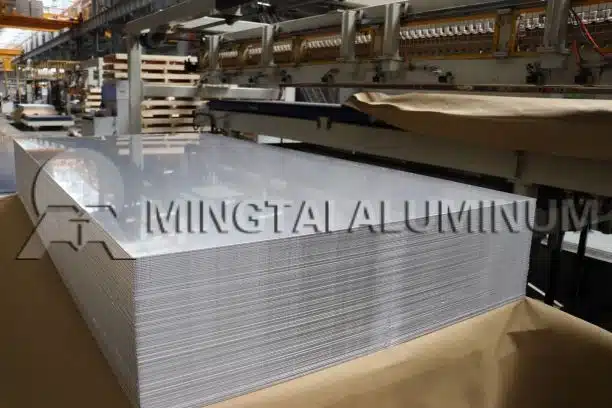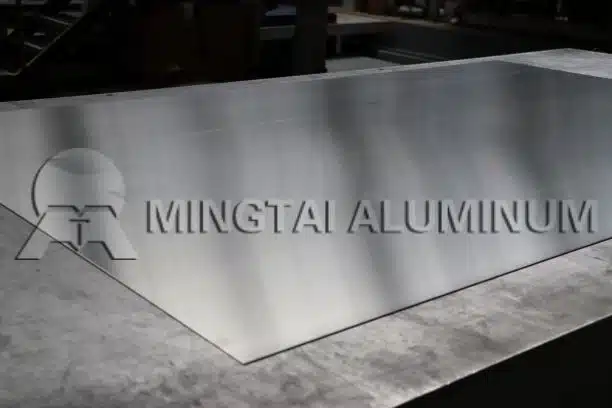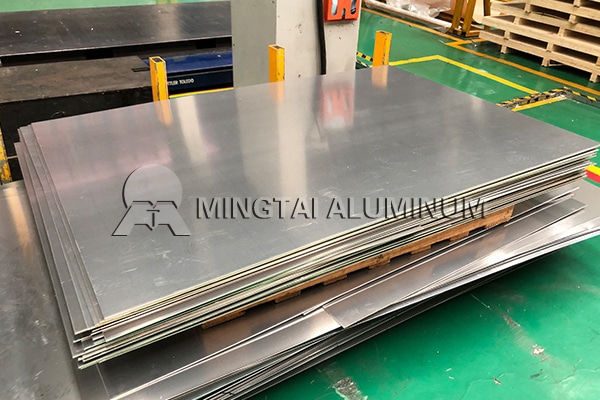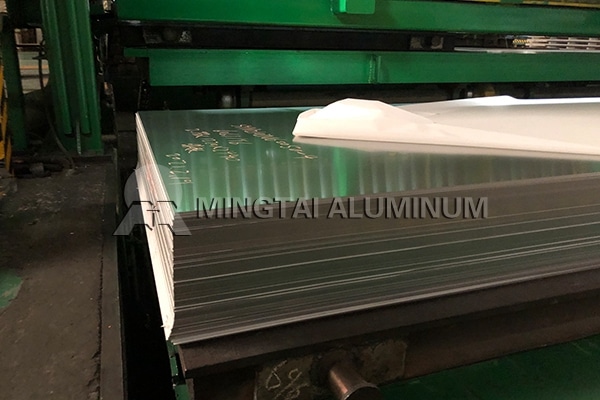
Picking the right aluminum alloy is huge for shipbuilders, marine folks, and fabricators. You need stuff that’s tough, won’t rust, and plays nice when you shape it—whether it’s aluminum plate, coil, or foil. Aluminium 5083 and 5086 are two awesome choices. They’re both in the Al-Mg crew and kill it in marine and industrial gigs. But they’ve got tiny differences in how they’re built and what they do best.
These affect welding and shaping. Getting the lowdown helps you choose smart, dodge problems, and make stuff that lasts forever. Here’s a chill rundown of 5083 vs. 5086, with tips for working with plates, coils, and foils.
Understanding Aluminum 5083 and 5086
5083 Alloy Overview
Aluminium 5083 is a beefy alloy that doesn’t need heat treating. It’s mostly aluminum (92–95%), with magnesium (4–4.9%), a bit of manganese (0.4–1%), and a dash of chromium (0.05–0.25%). It’s a rock star at keeping rust away, especially in salty ocean water. It also takes a beating without giving up. You’ll spot it in ship hulls made from thick aluminum plates, offshore rigs using coils, cryogenic tanks, and heavy marine gear.
5086 Alloy Overview
Aluminium 5086 is like 5083’s cousin, with a bit less magnesium (3.5–4.5%) and manganese (0.2–0.7%). It’s not as tough but bends and welds like a dream. That makes it perfect for boat decks from aluminum plates, superstructures from coils, and even thin foil for lightweight marine parts. Its go-with-the-flow vibe works for all sorts of marine and industrial jobs.
Mechanical Properties for Fabrication
Strength and Durability
5083 is a total tank, with a tensile strength of about 317 MPa and a yield strength of 228 MPa. It’s your go-to for hardcore jobs like hulls from thick aluminum plates, offshore rigs using coils, or cryogenic tanks that need to carry heavy loads. 5086 is a little less burly, at 260 MPa tensile strength and 195 MPa yield strength. It’s plenty strong for most projects but really pops when you need cool shapes over brute force, like with foil or thinner plates.
Formability and Fatigue Resistance
5086 is super easy to shape. Its elongation (12–20%) lets you bend, roll, or twist it into all kinds of designs, especially with aluminum coils or foil. That’s awesome for boat hulls, fast boats, or curvy bits. 5083’s elongation is a tad lower (12–16%), but it’s a beast at handling constant stress. That’s huge for stuff like offshore rigs or vehicle frames made from sturdy plates that get hammered over time.
Corrosion Resistance in Marine Settings
Saltwater and Stress Corrosion
Both alloys are champs at fighting rust, which you gotta have for marine work. 5083’s extra magnesium gives it a slight leg up in ocean water, especially against pitting or crevice rust on aluminum plates or coils. Both shrug off stress corrosion cracking like it’s nothing. But 5083 is usually the pick for high-stress parts chilling in saltwater forever, like thick hull plates.
Long-Term Exposure
5086 does great in less crazy marine spots, like boat decks from plates or gear made with foil that gets splashed sometimes. It fights rust well and bends easily. That makes it a solid bet for projects needing neat shapes without losing toughness, especially with coils or thinner foil.
Welding Characteristics of 5083 vs. 5086
Weldability
Welding’s a big deal for shipbuilders and fabricators working with plates, coils, or foil. Screw it up, and you’ve got weak spots or rust problems. 5083 welds okay but needs you to watch the heat to avoid warping or losing strength, especially on thick plates. 5086, with less magnesium, is a piece of cake to weld and doesn’t crack much, even on coils or thin foil. That saves you time and stress.
Filler Materials
You gotta use the right filler metal. Both alloys usually go with Al-Mg filler rods. 5356 is the usual pick for 5083 plates or coils. For 5086, 5183 or 5356 works great for plates, coils, or foil. Good fillers keep welds strong and rust-free, matching the metal you’re working with.
Heat-Affected Zone (HAZ) Performance
The spot next to a weld can get soft if you’re not careful. 5083 might need some TLC after welding to stay tough, especially on thick plates. 5086 usually holds up better in the HAZ, whether it’s plates, coils, or foil, because of how it’s made. For both, keep an eye on welding speed and heat, especially with chunky plates.
Fabrication and Machining Tips
Cutting and Shaping
You can cut, bend, and roll both alloys with regular shop tools, whether it’s plates, coils, or foil. Mechanical cutting works for plates and coils. Laser cutting gives clean edges with less hassle, great for foil or thin plates. 5086 bends like butter because it’s so flexible, especially in coil or foil form. 5083 needs a softer touch to avoid cracks, particularly with thick plates.
Surface Treatment
Coatings like anodizing or marine-grade paints keep rust at bay after shaping plates, coils, or foil. Clean the surface first to ditch oils, dirt, or oxides before welding or coating.
Warping and Distortion Control
Big parts, like plates or coils, can twist when you weld. Use clamps, watch your heat, and plan your welding order to keep things straight. 5086’s bendy nature helps, especially with coils or foil. 5083 might need tighter control to stay flat, particularly with plates.
Practical Uses in Shipbuilding and Heavy Fabrication
Ship Hulls and Decks
5083 is the king for structural hull plates and offshore rigs because it’s so tough—perfect for thick aluminum plates. 5086 is better for decks and superstructures where you’re bending coils or using foil for lightweight parts.
Offshore and Industrial Uses
5083 is awesome for cryogenic tanks, pressure vessels, and offshore rigs, often made from heavy plates or coils. It handles heavy loads and rough conditions like a pro. 5086 is great for industrial machines, tanks, and lighter stuff, using plates, coils, or even foil for smaller components. Its easy shaping and welding save you time and money.
Choosing Between 5083 and 5086
Key Comparison Table
| Property | 5083 | 5086 |
| Magnesium Content | 4.0–4.9% | 3.5–4.5% |
| Manganese Content | 0.4–1.0% | 0.2–0.7% |
| Tensile Strength | 317 MPa | 260 MPa |
| Yield Strength | 228 MPa | 195 MPa |
| Elongation | 12–16% | 12–20% |
| Weldability | Good | Excellent |
| Formability | Moderate | High |
| Corrosion Resistance | Excellent | Very Good |
Decision Tips for Fabricators
- Snag 5083 for tough, heavy-duty marine parts or cryogenic gigs, especially with plates or coils.
- Grab 5086 for wild shapes, easy welding, or jobs that don’t need max power, like coils or foil.
- Think about cost, how tricky the job is, and what kind of environment you’re in.

Aluminium 5086 and 5083 are both killer marine-grade alloys, whether you’re working with plates, coils, or foil. They fight rust, weld great, and work for all kinds of projects. 5083 is your buddy for heavy, high-strength jobs like hull plates or cryogenic coils. 5086 is a star for shaping tasks, like deck plates or foil for lightweight parts. Shipbuilders and fabricators should check what strength, shapes, and environment their project needs.
Getting top-shelf aluminum plates, coils, or foil from a solid supplier like MINGTAI ALUMINUM makes your work tougher, smoother, and built to last. Picking the right alloy can totally make your project a winner.
FAQ
Q: What’s the main difference between Aluminium 5083 and 5086?
A: It’s how they’re made and what they’re good for. 5083 has more magnesium, so it’s stronger and better at fighting rust—great for plates or coils. 5086 is a breeze to shape and weld, perfect for cool designs with coils or foil.
Q: Are 5083 and 5086 easy to weld?
A: Yup, both weld fine for plates, coils, or foil. 5086 is easier and cracks less. 5083 needs careful heat control and maybe some extra love after welding.
Q: How do I pick between 5083 and 5086 for my project?
A: Look at what you need. Go with 5083 for big strength or tough rust spots, like plates or coils. Pick 5086 for easy welding, shaping, or medium-strength jobs, like coils or foil.




